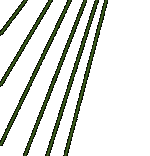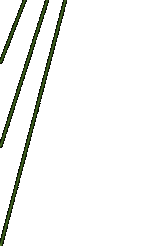Holographic
metaphor
The holographic metaphor in different areas of
culture
The metaphor that can
be found and realized in different areas of culture, sciences, politicians and other
spheres of social activity becomes a new paradigm [T. Kuhn, 1970]. The holographic
(holistic) metaphor, to our opinion, at present becomes a general cultural paradigm.
Without interpretation in details, we are listing some examples of researches that
evidently contain and reveal the holographic metaphor:
S. Grof: Transpersonal psychology and cartography of
unconscious:
Unconsciousness as a whole: Psychodynamic section - birth section -
transpersonal section
M. Porter’s theory of international competition:
Company as a whole of a strategy and structure: Factors – demand
– accompanying and supporting brands
Structural analysis in E. Bern’s psychological theory:
Itself: Child - Adult - Parentt
Fundaments of physics:
Reason: Space – Time - Energy
Gravitation: Electromagnetic field - Nucleon's field - Lepton's
field
The realization of the
holographic metaphor in different areas of knowledge and culture allows revealing general
trends of modern dynamics of projections of collective unconscious. In addition, to our
opinion, this metaphor contains also a heuristic value. As an example we are
briefly considering K. G. Jung’s model of human unconscious and an issue of cloning
human being.
K. G. Young’s model of
unconscious.
Without considering in
details the description of "bootstrap structure" of K. G. Young’
unconsciousness, we are considering the base concept of a model from a standpoints of the
holographic metaphor. According to K. G. Young, unconsciousness of each person contains a
subset, connected to personal story. It also contains an extensive content that every one
gets from ancestors and that saves our history as a species, as a tribe, as a family, and
as a biological individual – a transpersonal field in modern terms and a collective
unconscious in K. G. Jung. Collective unconscious is structured in a special way as a
united interconnected network of archetypes (patterns, clusters, and complexes), some of
which are realized and some of which are not realized consciously. K. G. Young has defined
an archetype of Psyche as "image of instinct in the person" in a paradox way.
From a standpoint of the holographic metaphor, the collective unconsciousness is a
"hologram" of the whole human community, which continuously has been recorded in
each of us through the ages, from one generation to the other. A person alone as a small
part of such a "hologram" contains in himself a holistic, but non-defined
symbolic image of all the people lived earlier and living at present, and which gets
revealed through archetype symbols. Full hologram consists of the coherent ensemble of all
people that live at the same time. As far as the process has some history and continuous
constantly, it may be an explanation of some people’s phenomenological ability "to
peek in the future". Different meditation practice, that are goaled toward
transpersonal experience are probably also connected to the same process. On the other
hand, in order to form, as far as it is possible, a full and vivid image of an object (a
person or a community of people) it is necessary to consider and study an ensemble of
small cells - the whole "hologram", to look for general features and
particularities. That is what such sciences as psychology; sociology, economy, etc. are
involved to. Both approaches add to each other but practically do not interfere, so to
say, don’t understand each other, as it is observed in life.
Cloning a human being
In our opinion, one of
the most "sick" points in the idea of cloning a human being is its connection to
the hypothetical suggestion that one single cell of a living organism (a person) can serve
for creating a complete identical copy of this organism. It is supposed indirectly that a
separate cell contains the whole full information about the organism, the history of its
interaction with the surrounding ambience in the process of its vital activity. However,
as it is estimated now, the volume of the information collected in the human organism as
an interconnected functioning ensemble of cells, is not less than the volume of genetic
information. It is most likely that this information is stored in the whole functional
network of interactions, that links a set of cells into the united complex human organism,
that is structured on different levels of the hierarchy. So, from the standpoint of a
holographic metaphor, the information about the organism is a hologram of itself and
simultaneously it is kept in it. Herewith, a small part of the "hologram", a
cell, serves to recreate the whole organism. But this recreation will be exact only at the
biological level. A holographic metaphor allows supposing that "a clone" is only
an "illusion of identity between a clone and an initial organism".
Great Square has no corners
All these
considerations allow concluding that one of the basic archetypes of collective unconscious
(the archetype of wholeness) that was revealed earlier basically in mythological and
religious symbols is at present formed as a holographic (holistic) metaphor. This metaphor
"leads itself" in different areas of scientific cognition, culture and education
and it becomes a component of modern paradigm. The holographic (holistic) metaphor as a
modern symbol of archetype of "Self" fully accords with eternal words given in
"Tao de Dzin": "Great Square has no corners".
|


